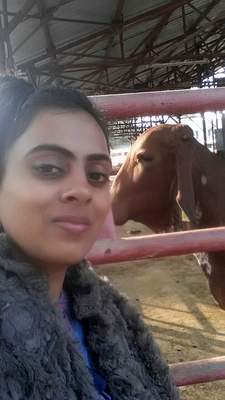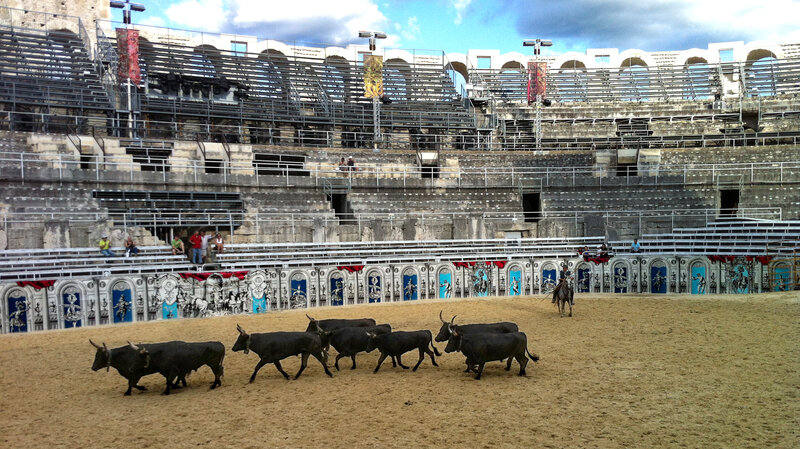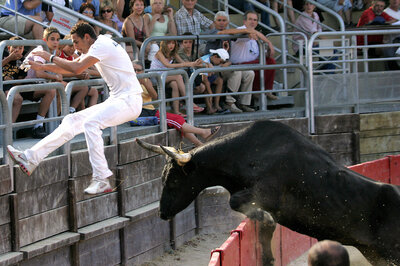Rajaraja Chola
BANNED

- Joined
- Sep 5, 2010
- Messages
- 9,051
- Reaction score
- -3
- Country
- Location
This is a topic, where our own fellow Indians, even city bred Tamilians have less knowledge on, parroting what western based NGO's are preaching us. I have started this thread under Science and Technology. The question is going to remain. Why? Jallikattu was never an Science. Its an game, and dangerous, cruel and old stupid game at that, according to some.
We have to look and analyse at ourselves. Not all the NGO's are evil as we will like to potray. Some wants specific rules to protect the Bulls and the players. We can call that natural evolution of the "game of Jallikattu". But stopping the game, hampers the prospects of evolution.
Some NGO's like PeTA have been virtually unsuccessful in banning horse races. I doubt if they even try. And they are not going to get "donations" for trying to ban something that is "not within their scope". Race horses bring in crores in betting and they eventually turn an blind eye to it. I cannot see PeTA in Kerala, trying to halt Bull slaughter. I cannot see them stopping Spain in banning their even more crude version of the game, hurting and killing the bull.
Jallikattu, the video is a short view of the farmers side of this ancient game. The name of Jallikattu is a recent one. The original name is "Eru Thazhuvuthal", meaning "Riding with the Bull" or "Embracing the bull". The Science behind it is, if the Bull is strong enough, it can carry 2-3 people on its hump to a distance of 100 metres. It becomes the Breeding bull of the village. Its progeny can be strong, virile, and can give more milk(if its a cow). The Bulls that loses are sent to farming and transportation and are not involved in breeding. This in effect, is the theory of the fittest, practised from time immorial.
Does Tamilians alone boasts to having this type of tests in selection? Wrong. Karnataka has it. Maharastra has it. Madhya Pradesh has it in their own ways of rock pulling, bullock cart races and other games. And they have all been targeted and banned. The farmers are the poor folks. How can they be expected to present their views in New Delhi when they cannot even afford to travel to Chennai? The NGO's can very well afford these.
This is a whole new industry planned to be replaced by foreign cows. Foreign brands like Jerseys, Holstein Fersian cross have taken over Northern part of India, replacing the indigenous brands. In 1930's, the nation of British India, had 130 versions of Indigenous breeds now reduced to 37. Tamil Nadu which had 6 major breeds, now has only 5.
Farmers now employing foreign breeds are facing exhorbitant costs for maintaining their cows. Indian cows might be low yielding, but low maintainance and do not require climate controlled environment. Educated people have reverted back to using Indigenous breeds as they provide more profit per costs.
Indians have failed themselves when we come to know that Gir cow breed of extremely low maintainance, native to Gujarat, has some 3000 herds left in India, while Brazil has approximately 50000 herds. Gir herds are exported throughout the world through Brazil to Australia, to Middle east, to Sub-Saharan Africa.
Losing our own breeds of animals to foreign ones, are akin to becoming refugees in our own country. Foreign cows cannot reproduce after 3-4 generations, after which artificial insemination, its feed, climate has to be created, which in short is nothing but business for western interests. We cannot be made abjected to slavery of our own folly.
I will be adding links to prove my theory. The video is in Tamil, and subtitle is available for understanding. Click on the subtitle option. The basic attempt is to educate, not only my fellow Indians, but neighbours, the importance of losing indigenous breeds. Awareness is needed. If Jallikattu is allowed to be die, and so will be the all varieties of indigenous breeds. Already Indian breeds of dogs, which are very low maintainance have disappeared from Indian homes. Next on the list are cows and unless we get our act together, its going to be glim future for Indian farmers.
@Nilgiri @ranjeet @Joe Shearer @illuminatidinesh @SrNair @@PARIKRAMA @Abingdonboy @illusion8 @John Reese @Zarvan @kaykay @911 @Allen Iverson
@GuardianRED @Rain Man @Perpendicular @kadamba-warrior @fsayed @third eye
@#hydra# @DesiGuy1403 @Stephen Cohen @Water Car Engineer @CorporateAffairs @R!CK @anant_s
@Kashmiri Pandit @Ankit Kumar 002 @SpArK @MilSpec @nair @Nair saab
@MKC @RISING SUN @raj76 @gslv mk3 @Sky lord @noksss @Skull and Bones @danish_vij
@Jamwal's @kaykay @Tamilnadu @Trichy @Levina
















 after that we will worry about Cock Fights , Dog Fights and Bull Fights
after that we will worry about Cock Fights , Dog Fights and Bull Fights 